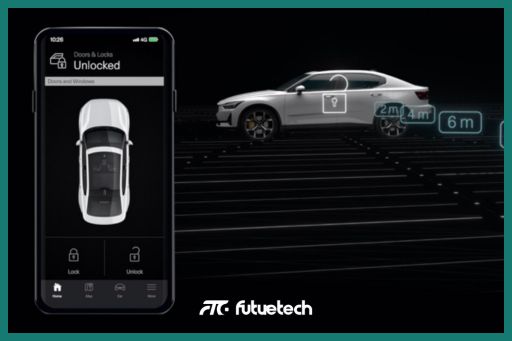
In recent years, as the automotive industry accelerates its digitalization and intelligent transformation, digital key technology has emerged as a growing trend. It is projected that by 2031, 60 million vehicles worldwide will be equipped with digital key functionality. The rapid adoption of this technology is driven not only by advancements in smart devices and the Internet of Things (IoT) but also by consumers' increasing demand for convenience, security, and connectivity in vehicles.
Key Features of Digital Key Technology
A digital key enables users to control car doors, engines, and other functions remotely using smartphones or other mobile devices via Near Field Communication (NFC), Bluetooth, or Ultra-Wideband (UWB) technology. Compared to traditional physical keys, digital keys offer the following advantages:
High Convenience: Car owners can unlock and start their vehicles directly using their smartphones, eliminating the need for physical keys.
Remote Control: Through smartphone apps, owners can remotely monitor vehicle status, lock/unlock doors, and even start the engine.
Multi-User Sharing: Digital keys support authorization, allowing vehicle owners to temporarily share access with others and revoke permissions at any time.
Enhanced Security: Digital key technology typically incorporates multi-layer encryption and authentication mechanisms, such as biometric verification and dynamic keys, reducing theft risks effectively.
Market Drivers of Digital Key Technology
Upgraded Consumer Demand
As lifestyles evolve, consumers increasingly seek convenience and technological innovation. The seamless experience offered by digital keys meets the demand for greater efficiency and intelligence in vehicle functions.
Push from Automakers
Leading global automakers are widely integrating digital key technology into their new models. Brands such as Tesla, BMW, and Hyundai have positioned digital keys as a key selling point to attract consumers.
Proliferation of Smart Devices
The widespread adoption of smartphones and smartwatches provides hardware support for digital key implementation. Technologies like Ultra-Wideband (UWB) and Bluetooth 5.0 further enhance the precision and stability of digital keys.
Policy and Industry Standards
Organizations such as the International Organization for Standardization (ISO) and the Car Connectivity Consortium (CCC) have introduced technical standards for digital keys, ensuring interoperability across brands and devices. This lays the groundwork for widespread adoption.
Technical Challenges and Solutions
Despite its promising future, digital key technology faces several challenges:
Security and Privacy Issues
Digital keys rely on wireless communication, which makes them vulnerable to hacking and data breaches. Solutions include:
○ Strengthening data encryption techniques, such as quantum encryption and dynamic keys.
○ Introducing multi-factor authentication mechanisms, integrating biometric technologies like fingerprints and facial recognition.
Device Compatibility
Compatibility issues between different car brands and mobile devices could hinder the widespread adoption of digital keys. To address this, the industry needs to further unify technical standards and encourage collaboration among manufacturers.
Battery Life Concerns
Low smartphone battery levels may prevent users from unlocking their vehicles. Solutions include:
○ Designing low-power communication protocols.
○ Providing backup keys or emergency support devices.
Future Trends and Prospects
Integration with Smart Homes and Cities
Digital keys will become an integral part of smart home and smart city ecosystems. For instance, users could control both their vehicles and home devices through smartphones or voice assistants.
Higher Levels of Personalization
Future digital key technology will incorporate more personalized features, such as automatically adjusting seats, climate control, and navigation settings based on user preferences.
New Business Models
Digital key technology could give rise to new sharing economy models, such as car-sharing and rental services based on digital key access, improving vehicle utilization rates.
Conclusion
The rapid development and widespread application of digital key technology mark a significant step toward the intelligent transformation of the automotive industry. By 2031, the goal of equipping 60 million vehicles globally with digital keys highlights not only the vast market potential but also the increasing demands for innovation and security. As related technologies mature and adoption expands, digital keys will profoundly reshape the driving experience and drive further transformation across the automotive sector.

